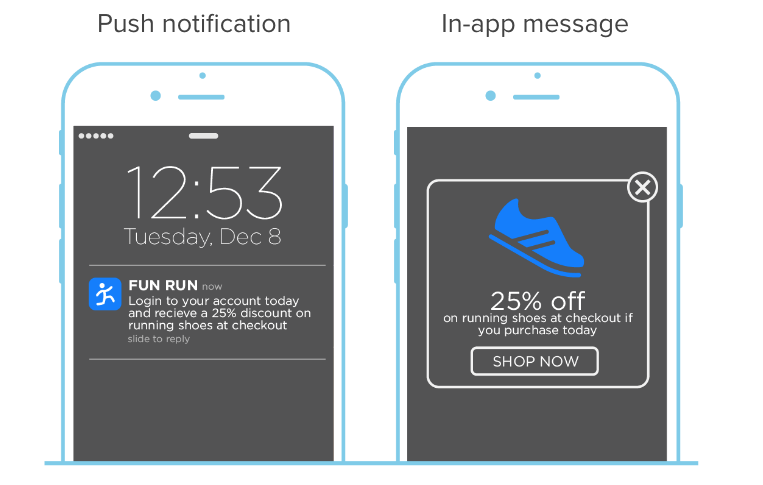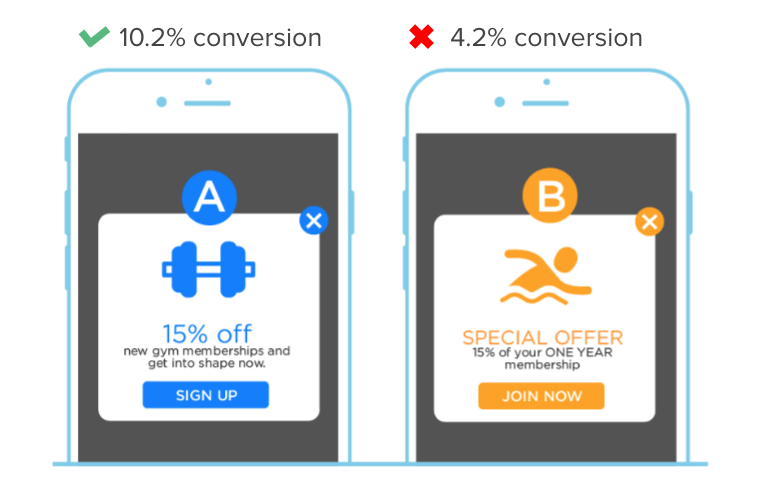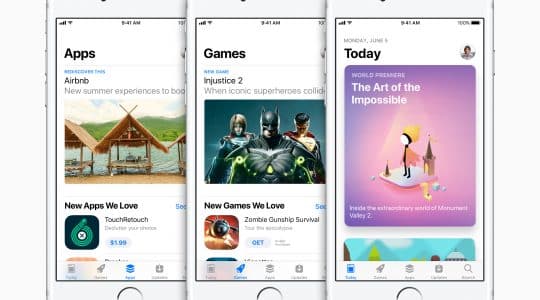
Any marketer knows that acquiring users takes hard work, and oftentimes, major ad spend. In 2015, an estimated 25% of total U.S. mobile ad revenue came from app-install ads. By 2020, U.S. app install ad revenue is slated to grow to over $7 billion. App users cost somewhere between $3–$10, but engaged users can cost between $10–$50. Using these in-app marketing tips can more than double your engaged users, leading to less waste and increasing the value of your acquired users.
In-App Marketing Tips
With the amount of money you spend on acquiring users, it’s crucial to have a plan to keep those users in the app and engaged. In-app marketing is about tailoring the experience and message to the customer to keep them engaged.
So, how do you maximize their value? Here are tips for keeping the users you worked hard to get to download your app.
Segment App Users
Divide users by their behavior, demographic and/or location. By doing that, you can tailor the user experience, messages, or offers that you send them in-app. You’ll also have insight to which users are the most valuable.
For example, imagine you have an iPhone ad for a company trying to drive retail traffic in Berlin. To segment your users and target the ones you most want to re-open your app, you could say, “I want to target iPhone users who speak German in Berlin, who have at least one in-app purchase but haven’t opened my app in the last 60 days.”
That’s just one of many ways to segment users for more effective in-app marketing. Below are a few others to consider:
- Best users — those who use the app at least three times per week, spend $5/week in-app, iPhone users
- Dormant users — haven’t used app in 30 days, previously made in-app purchase, German-speaking iPhone users in Berlin
- Advocate users — use app at least 1 hour a week, spend $5 in app a week, iPhone users
Send Push Notifications
Push notifications are messages that are sent to users when they are outside of the app, showing up on their home screen. They are best used to engage those who have downloaded your app, but aren’t using it any longer or frequently. By sending them relevant messages outside of the app, you can drive them back into your app where they can start spending or engaging again.
Like in the image below, you can “push” users to head back to your app by sending them a checkout discount. Push notifications are an incredible in-app marketing tool. They perform 2,770% better than batch messages, meaning if you send a tailored push message, there’s a much higher chance for engagement.

If you’re a gaming app, try sending users free credits to get them back in-app and gaming again. E-commerce? Free shipping. Lifestyle? Tips for healthy living or interior decorating. Food? Free and easy recipes users won’t be able to resist. Have someone who abandoned cart? Send them a coupon for 10% off when they complete their purchase.
Use In-App Messages
The only caveat to push notifications is that they may be turned off by users, and this is why incorporating in-app marketing messages is important. Push messages appear to the user when they are outside the app, like on their home screen or in a different app. In-app messages are notifications, offers, tips, etc. that pop up while they are using the app.
It’s important to note that in-app messages and push notifications are to be used in different use cases. In-app messages aren’t to use just because a user turned off pushes. Instead, in-app messages have content or offers more relevant to the user or high-usage users, like “rate my app,” or “welcome back, here’s a discount code.”
Leverage A/B Testing
A/B testing allows you to determine the best possible user experience, with the user’s help. Having the ability to test in-app offers allows you to see proof for which creative or copy yields a higher conversion. Testing user experience is also important. For instance, you can test things like whether users prefer a red or blue background, or more or less copy on a product page.
By testing, you will reduce the risk of sending users an in-app marketing message that’s ineffective. Sending messages that aren’t relevant or are annoying, detract from the user experience. Plan to message users as infrequently as possible, and when you do, make sure it’s as effective as possible.
Example: Test which special offer appeals to a segment of users who open the app after 30 or more days of being away. Then, launch the better-performing offer to everyone without having to push an update to the app store and waiting for your users to update their app.
 For more on how to optimize the user experience for each stage of in-app marketing, download the free report “Deconstructing the Mobile Marketing Funnel.”
For more on how to optimize the user experience for each stage of in-app marketing, download the free report “Deconstructing the Mobile Marketing Funnel.”
Like this article? Sign up for our daily blog digest emails.
Author
Becky is the Senior Content Marketing Manager at TUNE. Before TUNE, she handled content strategy and marketing communications at several tech startups in the Bay Area. Becky received her bachelor's degree in English from Wake Forest University. After a decade in San Francisco and Seattle, she has returned home to Charleston, SC, where you can find her strolling through Hampton Park with her pup and enjoying the simple things in life.




Leave a Reply
You must be logged in to post a comment.